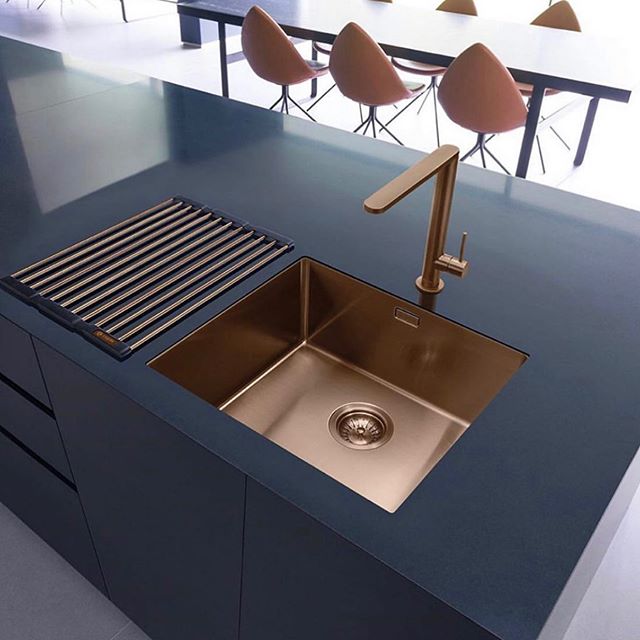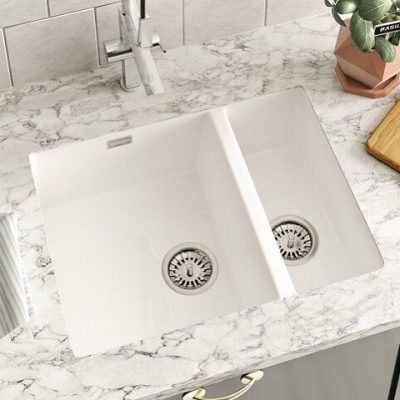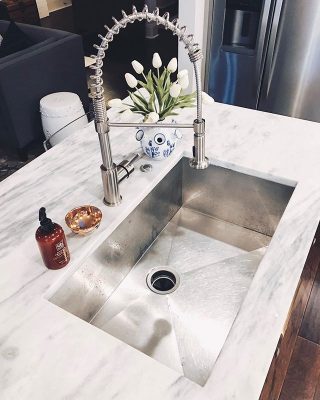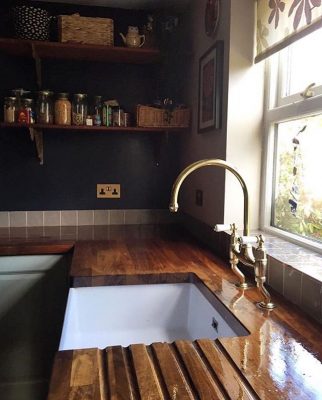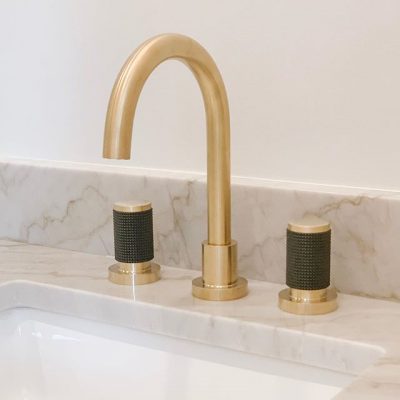bath
The Best Way to Clean a Kitchen Sink
The kitchen sink is of the biggest victims of everyday grime and dirt and is often left unattended for a long time. If that grime continues to accumulate, the bacteria that are lingering in the sink could lead to life-threatening diseases. Therefore, you have no other choice but to give your sink a good, healthy scrub.
However, for truly effective cleaning results, it is imperative that you use non-harsh cleaning products such as lemon juice, baking soda, and some elbow grease. Anyone of these will do for stainless steel sinks or even these made of stubborn porcelain.
Before you start, ensure that your sink is cleared of any food items, dish racks, coffee mugs and the like. Then be sure to wash away any visible crumbs. After doing that, put on your rubber gloves and then begin the sanitizing process.
Materials You Need:
- Non-abrasive scrubber
- Rubber gloves
- Baking soda
- White vinegar
- Hydrogen peroxide
- Salt
- Lemon
- Dish soap
1. How to Clean a White Kitchen Sink
You’ll likely come across food splatters, white and coffee stains and rust on white kitchen sinks than some of the other models. Hydrogen peroxide is the strongest disinfectant to take care of those stains that can restore your sink to its former glory.
The first thing you should do is pat the sink down until it’s just a bit damp and then sprinkle some baking soda onto the basin until it’s completely covered in it. Then sprinkle a couple of drops of hydrogen peroxide over the baking soda and start scrubbing with a brush or sponge. After scrubbing it entirely, wash the whole mixture down the drain.
2. How to Clean a Stainless Steel Kitchen Sink
Kitchen sinks made of stainless steel are more resilient than most sink materials. These sinks can stand up against the stains that white kitchen sinks are plagued with and are less prone to rust. Their real battle is against bleach, abrasive scrubbers, and acidic foods as they can ruin the finish. Be sure to avoid letting acidic foods sit in stainless steel sinks for longer durations and if you do, then use baking soda to remove the stains instead of bleach-based sprays.
Coat the wet sink in baking soda and then add a bit of hot water and dish soap to the sponge. It is pivotal to always start with the side of the basin whenever you want to scrub and then slowly work your way down as you push the grime into the drain. Keep doing this until the scum is completely gone. Finish it off by rinsing it with clean water. You should also use a plush microfiber cloth to take care of those visible water spots that stainless steel sink users usually encounter after cleaning.
3. How to Clean a Porcelain Kitchen Sink
Like white kitchen sinks, porcelain kitchen sinks are quite familiar with stains and rusts too. You could use the same techniques like the ones we shared for white kitchen sinks, but it would be better if you use a different method to remove rust to protect the pearly porcelain finish. Add a dash of salt on a lemon half and then scrub it on the rust until you see the right results. After that, use warm, soapy water to wash it clean and a microfiber cloth to dry it up.
But what about the sink faucets? Funny you should ask:
4. How to Clean a Sink Faucets
Materials You Need
- Floss
- Soft sponge
- Mild dish soap
- White vinegar
Instructions
- Take a bowl, fill it with warm water and squirt a bit of dish soap in it. Then dip a soft cloth or sponge in the solution to rub the faucet and handles with. Rinse the fixtures and then dry them off.
- If you see any lime buildup, add a drop of white vinegar on a piece of cloth and then place it on the spot for a couple of minutes. After that, rinse.
- Use a piece of floss to remove any grime buildup around the rim of the faucet. The floss should help you remove the grime, after which, you need to wipe it off with a soapy cloth.
 USD
USD CAD
CAD
